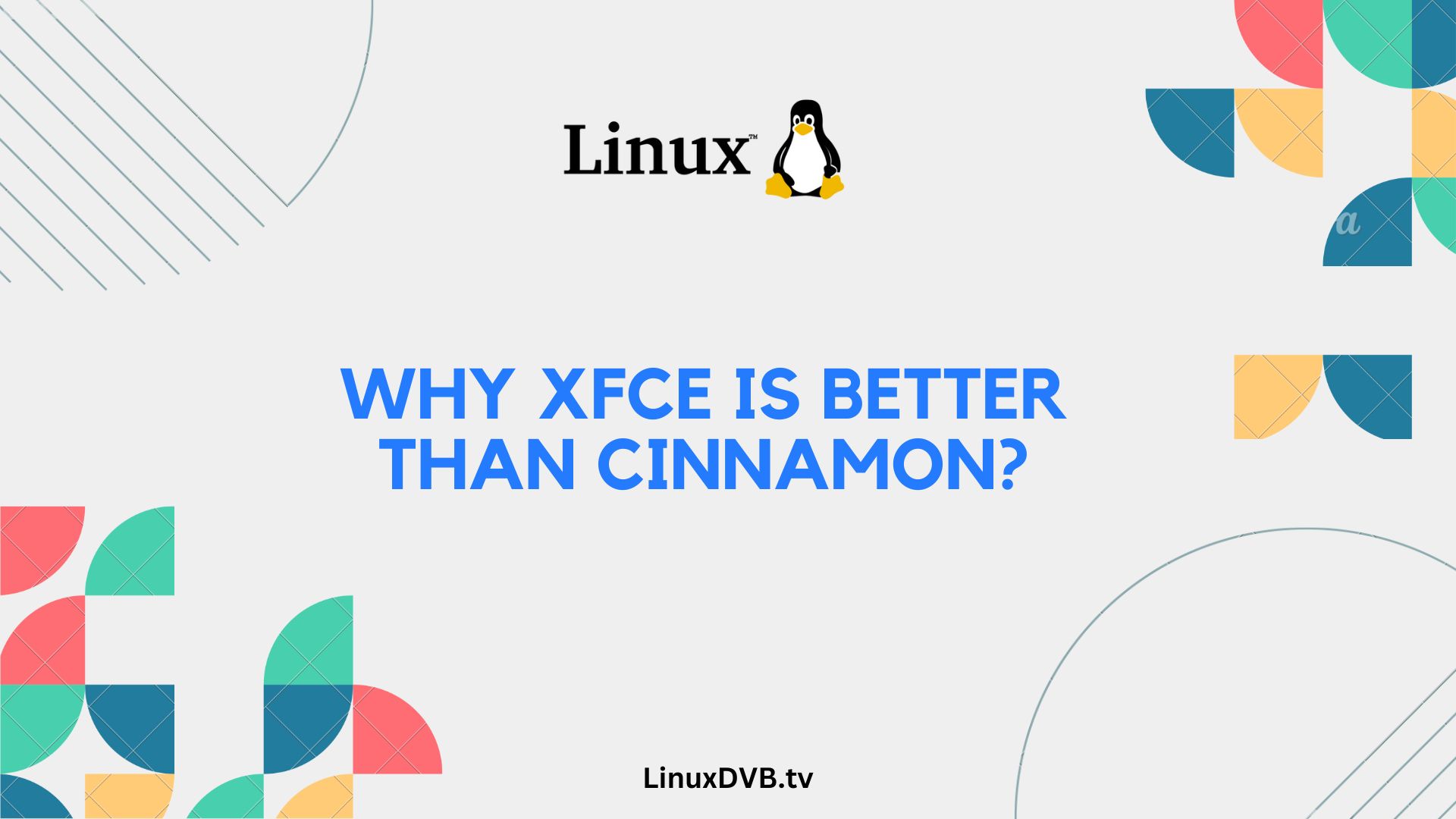Introduction
In the world of Linux desktop environments, choosing the right one can make a world of difference in your user experience. Two popular choices are XFCE and Cinnamon, each with its own set of features and benefits. In this article, we’ll delve deep into why XFCE stands out as the superior choice when compared to Cinnamon. Buckle up as we explore 25 detailed reasons why XFCE is the winner in this showdown.
Table of Contents
The Advantages of XFCE
Why XFCE is Better than Cinnamon?
If you’re wondering why XFCE is better than Cinnamon, you’re not alone. Many Linux enthusiasts have made the switch, and for good reason. Let’s dive into the compelling advantages of XFCE.
Lightweight and Resource-Friendly
XFCE’s lightweight nature means it consumes fewer system resources compared to Cinnamon. This translates to a snappier and more responsive user experience, especially on older hardware.
Customizability
XFCE offers an unparalleled level of customization, allowing users to tailor their desktop environment to their exact preferences. From themes to panel layouts, the possibilities are endless.
Speed and Performance
XFCE’s speed and performance are top-notch. Applications launch quickly, and system responsiveness is unmatched, making it ideal for productivity.
Stability
XFCE is known for its rock-solid stability. You can trust it to keep running smoothly without crashes or hiccups.
Modularity
The modular design of XFCE allows you to add or remove components easily, ensuring that your desktop environment is as streamlined as you want it to be.
Community Support
With a dedicated and active user community, XFCE enjoys constant development, bug fixes, and a wealth of user-created plugins and themes.
Low Power Consumption
XFCE’s efficiency extends to laptops, where it excels in preserving battery life, making it an excellent choice for users on the go.
Familiar Interface
XFCE’s traditional desktop layout is reminiscent of classic Windows environments, making it comfortable for users transitioning from other operating systems.
Accessibility
XFCE prioritizes accessibility, ensuring that all users, including those with disabilities, can navigate and use the system effectively.
Multimonitor Support
If you use multiple monitors, XFCE handles them seamlessly, with easy configuration and customization options.
Task Manager
The XFCE task manager provides a clear and organized view of running processes, making it simple to manage applications and system resources.
Application Menu
XFCE’s application menu is efficient and straightforward, allowing you to find and launch applications with ease.
Window Management
XFCE offers precise control over window placement and behavior, enhancing multitasking capabilities.
Notifications
Stay informed with XFCE’s unobtrusive yet informative notification system.
Thunar File Manager
Thunar, XFCE’s default file manager, is lightweight, fast, and feature-rich.
Accessibility Tools
XFCE includes accessibility tools, such as screen magnifiers and screen readers, to assist users with visual impairments.
Keyboard Shortcuts
Efficiency is key with XFCE’s customizable keyboard shortcuts, making tasks quicker and more convenient.
Compositing
XFCE supports compositing, allowing for stunning visual effects and transparency without compromising performance.
Session Management
XFCE’s session manager remembers your open applications and their states, ensuring a smooth restart.
Panel Plugins
The XFCE panel can be enhanced with a variety of plugins, providing quick access to essential functions.
Version Control Integration
Developers will appreciate XFCE’s integration with version control systems, simplifying code management.
Remote Desktop Support
XFCE supports remote desktop protocols, making it a versatile choice for remote work.
Community-driven Development
XFCE’s development is community-driven, resulting in a desktop environment tailored to user needs.
Open Source Philosophy
XFCE adheres to the open-source philosophy, promoting transparency and user empowerment.
Constant Updates
XFCE receives regular updates and improvements, keeping it relevant and secure.
FAQs
Is XFCE suitable for gaming?
Yes, XFCE is a suitable choice for gaming, thanks to its low resource consumption and responsiveness.
Can I customize XFCE to look like macOS?
Absolutely! XFCE’s customization options allow you to mimic the look and feel of macOS or any other operating system.
Does XFCE have a steep learning curve?
Not at all. XFCE’s user-friendly interface makes it accessible to both beginners and experienced users.
What makes XFCE more secure than Cinnamon?
XFCE’s open-source nature and active community contribute to its security, with prompt updates and vigilant monitoring.
Can I run XFCE on older hardware?
Yes, XFCE is renowned for its excellent performance on older hardware, breathing new life into aging systems.
How do I install XFCE on my Linux distribution?
Installing XFCE is typically straightforward and varies based on your distribution. Consult your distribution’s documentation for step-by-step instructions.
Why XFCE is better than Cinnamon?
XFCE is considered better by some due to its lighter resource usage and faster performance.Is Mint XFCE fast?
Yes, Linux Mint XFCE is known for its speed and efficiency on older or lower-spec hardware.Is Linux Mint XFCE good?
Linux Mint XFCE is a popular choice for users seeking a stable, user-friendly, and efficient Linux desktop environment.Conclusion
In the battle of desktop environments, XFCE emerges as the clear winner. Its lightweight, customizable, and performance-oriented nature makes it a top choice for Linux enthusiasts and newcomers alike. Whether you prioritize speed, stability, or flexibility, XFCE has you covered. So, if you’re asking, “Why XFCE is better than Cinnamon?”—now you know the answer. Make the switch today and experience the XFCE advantage for yourself.

